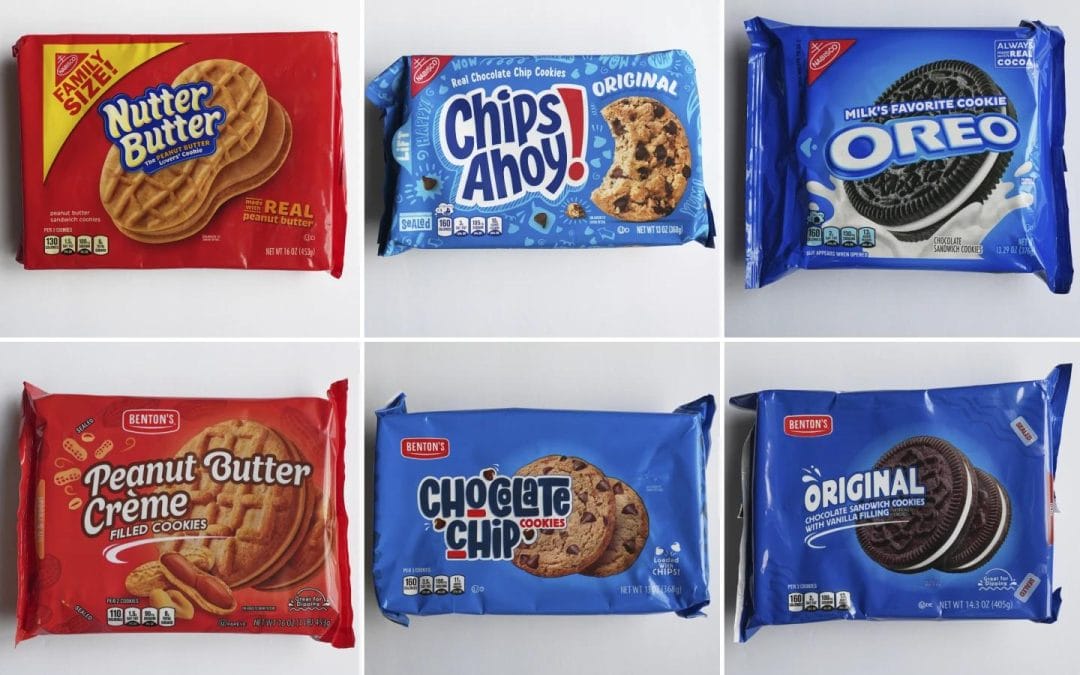A cookie is never just a cookie – especially when it’s wrapped in decades of brand equity.
Last month Mondelez International Inc., maker of iconic packaged food brands like Oreo and Ritz, filed suit against Aldi supermarkets, alleging that Aldi’s store-brand cookies and crackers “blatantly copy” Mondelez’s packaging. The snack giant is seeking to block Aldi from selling the lookalikes and to recover damages for alleged harm to its brands.
For retail and consumer packaged goods marketers, the lawsuit is a powerful reminder: the battle for shelf space and mind share has never been just about immediate product sales. It’s also about the brand experience and brand legacy. . . . about how consumers recall, relate to, and ultimately choose one brand over another.
To get deeper perspective, we asked Dorsey & Company President Julius Dorsey to draw from and share his perspective from his veteran experience as a marketing director for major national brands. While the Mondelez suit is the first of its kind in the United States (Mondelez was challenged by the makers of Hydrox cookies before the Federal Trade Commission in 2018), Dorsey said it was only a matter of time before a major brand took to the courts against private label goods to protect the brand identity and equity it worked so hard to build and cultivate.
“Brands like Oreo have spent years getting the words, colors, and shapes right – and clearly defining them in the consumer’s mind,” he said. “They don’t want any infringement or encroachment on that equity, recollection or loyalty of the buying customer. I like to think about the turf they’re protecting as productive “share-of-mind.”
What This Means for Retail and Grocery Marketing Leaders
Prior to the action against Aldi, Mondelez was challenged in 2018 by Leaf Brands, L.L.C., maker of Hydrox cookie brand, over shelf space. Leaf Brands accused Mondelez of deliberately obstructing Hydrox cookies from view in stores where both brands were sold.
But now, Mondelez seems to be emboldened by recent actions against Aldi, in Australia and the U.K. Both courts ruled against Aldi in 2023 and 2024, respectively – concluding packaging of certain snacks and beverages too closely mimicked established packaged goods brands in those countries. If you’re on the marketing team for a grocery chain – especially one investing heavily in private-label growth – these lawsuits could be a wake-up call.
Private-label expansion is no longer just about margins; it’s a branding game. And it comes with both opportunity and legal risk. The pressure to drive trial, grow share, and emulate the visual signals of market leaders must be balanced against the risk of brand confusion and litigation.
“I think the term ‘off-brand’ is a bit denigrating; it’s simply another brand,” Dorsey said. “Consumers choose a brand because it meets their needs. But if that brand grows by borrowing too heavily from another’s identity, you invite conflict.”
For retailers, Dorsey said the takeaway is clear: Develop your store brands with discipline and distinction. Don’t just mimic: position. Build a narrative, customer experience and design language that can stand on its own. Something different AND better!
This is especially vital as store brands move from value-tier alternatives to premium challengers. As the lines blur, the responsibility of marketing leadership is to ensure those lines remain legally and strategically sound.
The Stakes behind the Suit
Store-brand mimicry is hardly new. But the recent actions against Aldi signal that national brands may be growing less tolerant – and perhaps more vulnerable – in the current economic climate.
“Vulnerability varies by brand, category, and circumstance,” Dorsey said. “Right now, value-priced brands are getting a second look. Consumers aren’t saying ‘I’m buying an off-brand;’ they’re saying ‘I’m buying what meets my needs.’”
That mindset shift has real implications. For major brands, packaging is only one piece of the puzzle. The real test is whether the product experience matches the premium promise: taste, texture, familiarity and consistency.
And for the store brand? The opportunity lies in getting trial, especially if the lookalike lowers ANY barriers to switching.
What Comes Next?
If Mondelez succeeds in its claim, could this open the floodgates for other major brands?
“Maybe,” Dorsey said. “But the smart move isn’t always litigation. A good product manager asks: Why are customers switching? Was it price? Packaging? Taste? You need to understand what attracted them to the other brand – not just assume you know.”
Winning the Identity Game
So how should premium and value-priced brands alike respond in a hypercompetitive, increasingly channel-agnostic environment?
For the value brand: “To grow, you need trial,” Dorsey explained. “Find out why people buy your brand, and what they think about your competition. Then attack something your competitors are weaker on – and be different in a way that’s relevant and defensible.” And in packaged goods, trial isn’t a one-and-done, he said; the trial must be engineered to induce repeat purchase and a new behavior in the consumer.
For the market leader: “If you’ve been a good steward of the brand, and you’re measuring how your market responds to it, worry less. You won’t be easily surprised about the others,” Dorsey said. “Brand leadership comes with a frame of reference, familiarity and expectation. That’s hard to replace.”
In a world where a product’s packaging may be the first cue a shopper sees before making a choice, brand clarity is more than cosmetic. It’s strategic, and comes with an ROI that fits the term brand equity.
Whether you’re managing a national brand or building a private label portfolio, two questions to know answers to are: What truly sets your product apart – and – can your customer tell the difference?
Want to talk differentiation, positioning, or protecting your brand? Click “Contact Us” to schedule a consultation with Dorsey & Company.

